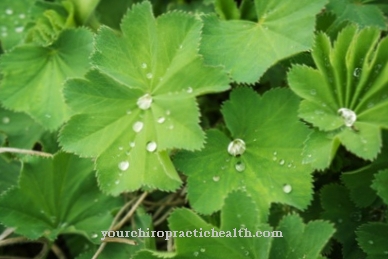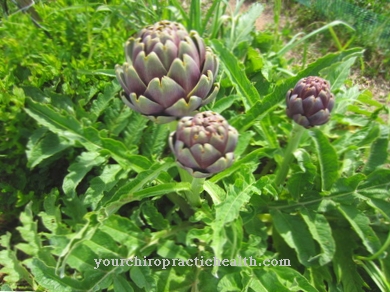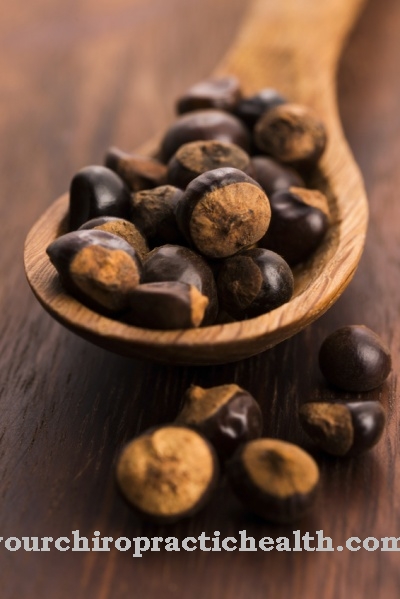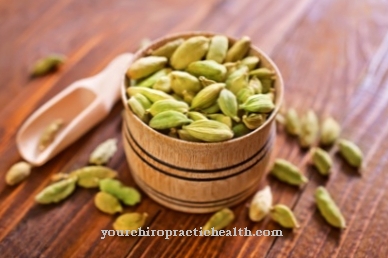Dil Nowadays it is primarily known as a seasoning herb in the kitchen, especially as an ingredient for salad dressings or for pickling cucumbers. But the possible uses are far more diverse. Dill has been shown to be effective as a remedy for a wide variety of diseases. The Greeks and Romans used the dill as a medicinal and aromatic herb as early as ancient times.
Occurrence & cultivation of dill

Of the Common dill is an annual herb that is found practically all over the world. He is also as Gille respectively Cucumber herb known. The plant, which originally came from the Middle East, is one of the most commonly grown aromatic plants in German-speaking countries. Because the umbelliferae are quite undemanding in terms of their location and require little care, the plant is ideal for growing in your own garden.
The plant reaches a height of up to 75 centimeters, but in individual cases it can also be over a meter high. The narrow leaves and the typical scent of the plant are characteristic. The fragrances are contained in all parts of the plant. They make it easy to distinguish the dill from other umbelliferae. The flowers are yellow and rather inconspicuous. The seeds used in medicine develop from them.
As a medicinal herb, the ripe seeds are harvested from late summer until autumn. They should be dried for a few more days in a warm, airy place and stored in an airtight container for better storage. As a spice, the leaves can be harvested as early as June and processed as freshly as possible.
The plant can easily be propagated by seeds in the home garden. A single umbel is not harvested for this purpose. The seeds fall out and germinate quite reliably in the same place in the following year. This ensures the harvest of the following year. Because of its low demands and the small space requirement, it can also be cultivated in a flower pot. However, the height of the mature plant should be taken into account.
The essential oils it contains are responsible for the effect of the dill. Because, as with most aromatic and medicinal herbs, these are best formed in the sun, this should be taken into account when choosing a location when growing in your own garden. If you don't have the opportunity to grow the plant yourself, you can get the dried seeds or even ready-made tea in pharmacies or drugstores.
Effect & application
As a medicinal herb, dill is primarily used for gastrointestinal complaints. For this purpose, a tea is prepared from the dried or fresh seeds: one to two teaspoons of the crushed seeds are poured over with a cup of boiling water, after 5 minutes of steeping time, pour off and sipped while still warm. This tea is very mild and can also be used in babies to relieve flatulence.
Adults can also prepare a healing drink with wine. The preparation is similar to that of tea, but the wine should only be lukewarm. This dill wine is said to have a positive effect on people who have trouble falling asleep or are nervous. In the case of menstrual cramps, the tea, however prepared in a correspondingly larger amount, can provide relief as a hip bath. In addition, the tea can also be used internally here.
Breastfeeding mothers appreciate the lactating effect of dill, which is why it is often included as an ingredient in breastfeeding teas. The tea is used as a compress for bruises and bruises. To do this, a clean cloth is soaked in the tea and placed on the affected area. If necessary, the compress is changed and the treatment is repeated until it improves.
An oil obtained from the seeds, which is commercially available, can also be used for relief from bruises. Another type of external application is the oil compress. For this purpose, the seeds or dried and chopped leaves of the dill plant are placed in a cloth soaked in olive oil. This compress is applied lukewarm and is said to have a healing effect on ulcers.
An oil can be made against headaches. For this purpose, two handfuls of dill are put into a bottle with half a liter of olive oil and this is stored in a warm place for two weeks. Then the oil is poured off and kept tightly closed. Clinically proven is a progesterone-promoting effect of the dill seeds. This results in a healing-supporting effect in the case of cycle irregularities in women.
Importance for health, treatment & prevention
Dill is a commonly used medicinal herb in herbal medicine today. The effect is similar to that of fennel, but dill is the milder means. The seeds can often be found alongside other medicinal herbs in ready-made tea blends against digestive problems or flatulence. The oil obtained from the seeds is also easily available in pharmacies and drug stores. There are no known side effects. The only risk with the application is that the agent may not work to the desired extent.
To support a low-salt or salt-free diet, dill herb can be used as a salt substitute to flavor dishes. Due to the easy self-cultivation or the good availability in trade, it is very suitable for self-treatment of the aforementioned complaints. If, despite proper use, there is no improvement or if the condition worsens, a doctor should be consulted.

























.jpg)


